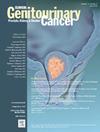前列腺癌表现的社会经济差异:诊断时ADI对前列腺癌分期的影响。
IF 2.7
3区 医学
Q3 ONCOLOGY
引用次数: 0
摘要
目的:调查社会经济剥夺的影响,作为衡量区域剥夺指数(ADI),在诊断前列腺癌阶段在北美全州队列。方法:对2004年至2022年间密歇根州卫生与公众服务部(MDHHS)年龄≥30岁、经前列腺活检确诊为前列腺癌的男性进行查询。根据每个患者居住的人口普查区分组对其进行ADI评分。个人被进一步划分为四分位数,其中第四个1 (ADI 75-100)代表生活在最贫困地区的人。Logistic回归分析检验了ADI对NCCN高危PCa (T3-T4或PSA >20 ng/ml或ISUP GG≥4)或转移性PCa (N1或M1)诊断的影响。结果:我们纳入78018例患者,其中17%为非西班牙裔黑人(NHB)。中位(IQR)年龄为66(59-72)岁。与最不利四分位数(Q1)的患者相比,最不利四分位数(Q4)的患者更容易出现NHB(40.1%比5.4%),诊断时PSA bb0 20 ng/ml(10.6%比5.1%),GG≥4(55.4%比53.1%),临床T≥3(4%比3%)和转移(3.3%比1.8%)的比例更高(均P < 0.0001)。在MVA, ADI百分位数每增加10个单位,诊断为NCCN高风险和转移性PCa的相对几率分别增加2% (95% CI, 1.01-1.02)和4% (95% CI, 1.02-1.05)。此外,与NHW男性相比,NHB男性被诊断为NCCN高危PCa和转移性PCa的相对几率分别高出1.16倍(95% CI, 1.12-1.22)和1.52倍(95% CI, 1.38-1.68) (P < 0.001)。结论:生活在更贫困的地区,新诊断的前列腺癌具有不利特征的相对几率更高。我们的研究强调了社会经济剥夺对癌症早期诊断造成的无声障碍,并呼应了对量身定制的干预措施的呼吁,以弥合这一差距。本文章由计算机程序翻译,如有差异,请以英文原文为准。
Socioeconomic Disparities in Prostate Cancer Presentation: The Impact of ADI on Prostate Cancer Stage at Diagnosis
Objectives
To investigate the impact of socioeconomic deprivation, as measured by Area Deprivation Index (ADI), on PCa stage at diagnosis in a North-American statewide cohort.
Methods
The Michigan Department of Health and Human Services (MDHHS) was queried to identify men aged ≥30 with a confirmed diagnosis of PCa at prostate biopsy between 2004 and 2022. An ADI score was assigned to each patient based on their residential census block group. Individuals were further categorized into quartiles, where the fourth 1 (ADI 75-100) represented those living in the most deprived areas. Logistic regression analysis tested the impact of ADI on diagnosis with NCCN high-risk PCa (T3-T4 or PSA >20 ng/ml or ISUP GG ≥4) or metastatic PCa (N1 or M1) at presentation.
Results
We included 78018 patients, 17% of whom were Non-Hispanic Black (NHB). Median (IQR) age was 66 (59-72) years. Patients in the most disadvantage quartile (Q4) were more likely to be NHB (40.1% vs. 5.4%), had higher proportion with PSA>20 ng/ml (10.6 % vs. 5.1%), GG≥4 (55.4% vs. 53.1%), clinical T ≥ 3 (4% vs. 3%) and metastasis (3.3% vs. 1.8%) at diagnostic presentation, compared to those in the least disadvantaged quartile (Q1) (all P < .0001). At MVA, for each 10-unit increase in ADI percentile, the relative odds of being diagnosed with NCCN high-risk and metastatic PCa increases by 2% (95% CI, 1.01-1.02) and 4% (95% CI, 1.02-1.05), respectively. Moreover, when compared to NHW men, NHB men had a 1.16 (95% CI, 1.12-1.22) and a 1.52-fold (95% CI, 1.38-1.68) higher relative odds of being diagnosed with NCCN high-risk PCa and metastatic PCa, respectively (P < .001).
Conclusions
Living in more deprived areas was associated with higher relative odds of newly diagnosed PCa with unfavorable features. Our study underscores the silent barrier that socioeconomic deprivation poses to cancer early diagnosis and echo the call for tailored interventions to bridge this gap.
求助全文
通过发布文献求助,成功后即可免费获取论文全文。
去求助
来源期刊

Clinical genitourinary cancer
医学-泌尿学与肾脏学
CiteScore
5.20
自引率
6.20%
发文量
201
审稿时长
54 days
期刊介绍:
Clinical Genitourinary Cancer is a peer-reviewed journal that publishes original articles describing various aspects of clinical and translational research in genitourinary cancers. Clinical Genitourinary Cancer is devoted to articles on detection, diagnosis, prevention, and treatment of genitourinary cancers. The main emphasis is on recent scientific developments in all areas related to genitourinary malignancies. Specific areas of interest include clinical research and mechanistic approaches; drug sensitivity and resistance; gene and antisense therapy; pathology, markers, and prognostic indicators; chemoprevention strategies; multimodality therapy; and integration of various approaches.
 求助内容:
求助内容: 应助结果提醒方式:
应助结果提醒方式:


